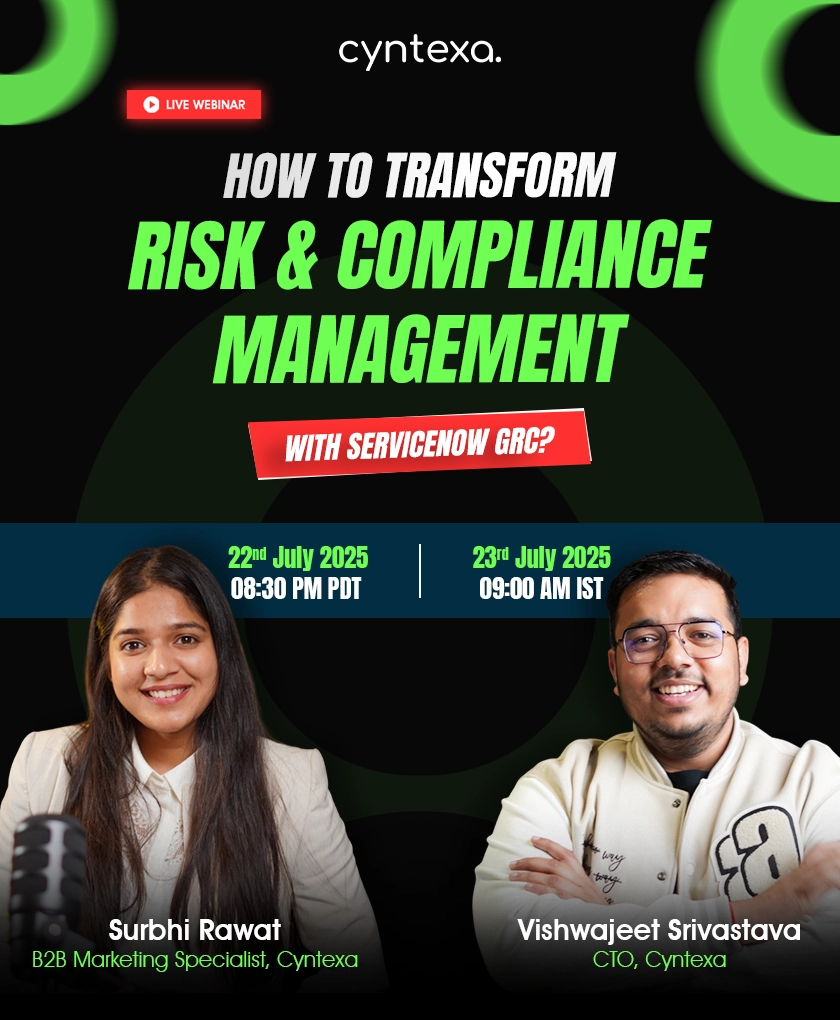What Should Your Customer Data Strategy Be in 2025?
Table of Contents
It’s 2025, and if your customer data strategy still revolves around collecting as much data as possible and figuring out what to do with it later—you’re already behind. The rules have changed. Privacy regulations are tightening, AI-driven analytics is redefining personalization, and customers expect brands to not just “know” them but to anticipate their needs without creeping them out.
The real question isn’t just what data strategy is but how you can survive and thrive in an era where data is your biggest asset and greatest liability. Should you go all-in on first-party data? Is zero-party data the silver bullet? Can AI enhance customer trust, or will it push the boundaries too far?
This blog cuts through the noise. It does not offer generic advice or outdated best practices—just a forward-thinking, reality-checked customer data strategy that will define market leaders in 2025.
Let’s dive in.
5 Must-Have Customer Data Strategies for Businesses in 2025


Businesses need a smarter approach to handling customer data, one that balances personalization, privacy, and compliance. These five key strategies will help organizations optimize data strategy metrics, build and strengthen customer trust, and drive long-term growth.
1. Customer Data Strategy: Build a Cloud-Centric Data Foundation
Businesses are now rapidly adapting to the digital-first economy, where customer interactions happen on a wide scale: web, social media, email, call, in-store, and more. This results in massive volumes of customer data that need a scalable data security strategy.
A cloud-centric data foundation is the core infrastructure that enables businesses to:
- Unify customer data across all touchpoints into a single, structured, real-time ecosystem.
- Eliminate silos between product, sales, marketing, and customer support teams.
- Enable AI-driven personalization, automation of real-time customer data analytics strategy.
- Ensure security, compliance, and governance while keeping data easily accessible.
- Scale dynamically to handle growing customer interactions without infrastructure limitations.
Without this foundation, businesses struggle with disconnected experiences, data inconsistencies, poor personalization, and compliance risks. In 2025, a cloud-first data strategy approach is not a choice; it has become necessary.
What does it take to build a Cloud-Centric Data Strategy?


Building a high-performing, cloud-based customer data ecosystem requires focusing on these four key components:
1. Centralized Customer Data Platform (CDP) & Cloud Storage
A centralized repository that stores, organizes, and manages customer data from all sources is at the heart of a cloud-centric data strategy. This could be a Customer Data Platform (CDP) or a cloud-based data warehouse.
How to Implement:
To implement this, businesses should adopt a scalable cloud data storage solution. Salesforce Data Cloud is ideal for managing CRM-centric data, offering real-time data unification for marketing, sales, and service teams.
The next step is unifying all customer data into a single platform, which is important for data efficiency. Integrating data from CRM, marketing automation, e-commerce, customer support, social media, and offline channels ensures businesses maintain a real-time, actionable customer data ecosystem. Additionally, structuring data using customer identity resolution helps build a single, accurate view of each customer.
With a centralized data platform, all departments can access the same customer data, enabling seamless personalization, faster insights, and consistent messaging. This results in improved customer experiences and a more data-driven approach to decision-making.
2. Real-Time Data Processing & AI-Driven Analytics
A cloud-centric data foundation must be capable of processing customer interactions in real time while leveraging AI-driven analytics to personalize customer experiences.
How to implement:
To achieve this, businesses should deploy real-time data streaming and processing technologies. Solutions like Salesforce Data Cloud, Apache Kafka, AWS Kinesis, or Google Pub/Sub enable instant data ingestion and processing. Real-time identity resolution ensures customer interactions from multiple channels are merged accurately, creating a unified and up-to-date customer profile.
Integrating AI for automated insights and personalization takes customer engagement to the next level. Salesforce Einstein AI, for example, delivers real-time recommendations and predictive insights, while machine learning models dynamically segment customers based on their behaviours. Automated decision-making across various channels allows businesses to trigger marketing campaigns in response to real-time customer actions and deploy AI-driven chatbots that instantly resolve customer inquiries.
3. Robust Security, Compliance, and Governance
With increasing data privacy regulations such as GDPR, CCPA, and HIPAA, businesses must ensure their cloud data foundation is secure, compliant, and governed.
How to implement:
Implementing enterprise-grade data security is a fundamental step. Platforms like Salesforce Einstein Trust Layer, AWS IAM, and Google Cloud Security provide role-based access control, ensuring only authorized users use customer data. Encrypting data at rest and in transit further strengthens security, preventing unauthorized access or breaches.
Automating compliance and consent management is also essential. Salesforce Data Cloud offers built-in GDPR and CCPA compliance tools, enabling businesses to handle customer consent seamlessly. Automated consent tracking ensures customer preferences are honoured across all platforms, reducing regulatory risks.
AI-powered governance solutions can enhance data integrity by identifying unauthorized access and detecting anomalies. Implementing audit logs and real-time access monitoring allows businesses to track compliance, ensuring data remains secure and properly managed.
4. Seamless Integration with All Customer-Facing Applications
To expand its potential, a cloud data foundation must integrate effortlessly with customer-facing applications such as CRM, e-commerce, marketing automation, customer service, and AI-driven analytics.
How to integrate:
Connecting a data cloud with business applications enables smooth data sharing across platforms. For instance, Salesforce Data Cloud natively integrates with Sales Cloud, Marketing Cloud, and Service Cloud, ensuring a unified ecosystem. Zero-ETL integrations with external platforms like Snowflake, Google Cloud, and AWS enable seamless data synchronization without complex data extraction processes.
Ensuring bi-directional data flow is another critical aspect. Businesses need real-time data synchronization across all customer engagement channels to maintain a continuously updated 360-degree customer view. This allows marketing, sales, and service teams to operate with the most current customer insights, improving efficiency and enhancing cross-channel engagement.
With seamless integration, organizations empower their teams with a comprehensive, real-time view of customers. This streamlines operations and enables hyper-personalized experiences, building stronger customer relationships and driving business growth.
How Casey Delivers Personalized Experiences at Scale

Casey’s, the fifth-largest pizza chain in the U.S., uses Salesforce Customer 360 and Data Cloud to create unified customer profiles—fueling personalized experiences every day.
- 13M+ Customer Profiles
- 150+ Profile Attributes
- 6B+ Engagements Tracked
- 200M+ Personalized Messages Sent
Download Our Whitepaper Now to learn how Data Cloud can help you build deeper customer connections.

2. Empower Marketers With AI & Self-Service Analytics
Marketing in 2025 is no longer just about serving creativity—it’s about serving through intelligence, speed, and precision. Previously, marketers relied heavily on data teams to extract insights, which sometimes caused delays in campaign execution. When data was analyzed and converted into meaningful reports, market conditions or customer behaviours had already changed. This lag made it difficult to act on real-time opportunities, leaving businesses struggling to keep up.
To stay competitive, businesses must equip marketers with AI-driven self-service analytics. This means giving marketing teams direct access to real-time, AI-powered insights without requiring coding or technical expertise.
- A well-implemented AI-driven marketing strategy enables businesses to:
- Reduce dependency on data teams by enabling self-service insights.
- Speed up decision-making through real-time data strategy metrics.
- Deliver real-time, hyper-personalized customer experiences.
- Optimize marketing spending dynamically based on predictive analytics.
- Enhance customer segmentation and targeting with AI-driven insights.
As generative AI, predictive analytics, and automation become mainstream, businesses must shift from data retrieval to AI-powered marketing execution.
What does it take to build an AI & Self-Service Marketing Analytics Strategy?


Building an AI-driven marketing ecosystem requires focusing on these five key pillars:
1. AI-Powered No-Code Analytics for Marketers
Marketing teams shouldn’t need SQL, Python, or data engineering expertise to analyze customer data. AI-powered self-service analytics tools allow them to ask questions in natural language and receive instant, actionable insights.
How to implement:
- Adopting AI-driven marketing analytics tools is a game-changer. Salesforce Einstein AI, for example, integrates with CRM systems to automate campaign optimization and customer segmentation. Tableau GPT also provides interactive, no-code dashboards for advanced visualization, while Microsoft Power BI and AWS QuickSight offer cloud-native business intelligence solutions with AI-driven insights.
- Natural Language Processing (NLP) makes analytics even more accessible. Marketers can ask AI-driven assistants questions like:
- “Which customer segment had the highest conversion rate last month?” or “What factors influence cart abandonment the most?” AI interprets these queries, processes customer data, and delivers immediate, accurate insights.
- Self-service access to marketing dashboards further enhances efficiency. With drag-and-drop analytics tools, marketers can create custom reports and performance insights without waiting on data teams. AI even suggests insights dynamically, such as identifying the best-performing ad creatives or predicting customer trends.
2. AI-Driven Predictive Analytics for Campaign Optimization
Marketing should no longer be reactive—AI enables marketers to predict customer behaviour and optimize campaigns before launching.
How to implement:
- Predictive AI models help forecast key marketing outcomes. Tools like Salesforce Einstein AI and Google Vertex AI can predict customer churn probability, the likelihood of conversions based on behaviour patterns, and the best times to send emails or ads for maximum engagement. These insights allow busin esses to address customer needs rather than reacting after the fact.
- AI also enhances audience segmentation and lookalike modelling. Instead of manually categorizing customers, AI dynamically groups them into high-intent and low-intent segments. It even finds new customers similar to the most engaged audience, expanding reach while maintaining high conversion rates.
- AI transforms A/B testing, a core part of digital marketing. Instead of manually running tests, AI dynamically selects the best-performing ads, headlines, or CTAs in real-time. Machine learning models adjust ad spending automatically based on performance data and ensure the allocated marketing budget is used efficiently.
3. Hyper-Personalization at Scale with AI & Automation
Today’s consumers expect hyper-personalized marketing experiences. AI enables businesses to tailor every interaction—emails, websites, social ads, and customer service—based on real-time customer behaviour.
How to implement:
- AI-powered customer journey orchestration takes personalization to the next level. Platforms like Salesforce Marketing Cloud use AI to personalize email sequences, dynamically adjust ad creatives based on user preferences, and automate follow-ups when customers engage but don’t convert.
- AI-driven recommendations further enhance personalization across industries. In e-commerce, AI suggests products based on browsing behaviour. In finance, AI recommends tailored financial products based on transaction history. AI personalizes content suggestions in media and streaming, much like Netflix’s recommendation engine.
- Conversational AI is also transforming customer interactions. AI chatbots personalize conversations dynamically based on past interactions, while AI-assisted agents receive real-time insights to improve customer support. This level of personalization ensures that customers feel understood, increasing engagement and loyalty.
4. Real-Time Marketing Insights & AI-Driven Decision Making
Marketers need real-time insights to make data-driven decisions work for them. AI automates the process, ensuring teams react instantly to market shifts, trends, customer behaviours, and growing demands.
How to implement:
- AI-powered marketing dashboards offer real-time visibility into campaign performance. With tools like Google Looker and Salesforce Tableau, marketers can track live website traffic, monitor customer sentiment trends on social media, and analyze AI-driven attribution models for ad spend allocation—all in real-time.
- AI alerts and automated insights further enhance agility. If conversion rates suddenly drop or a new trend emerges, AI sends instant notifications, allowing marketers to act immediately. This proactive approach ensures marketing teams no longer rely on outdated weekly or monthly reports but instead make decisions at the moment, backed by real-time data.
Businesses that empower marketers with AI-driven self-service analytics, predictive insights, and automation will lead the way. Instead of waiting for data teams to generate reports, marketers can act in real-time, creating hyper-personalized customer experiences and maximizing ROI.
3. Unify Data Across Applications for Seamless Customer Experiences
A disconnected customer experience—like receiving irrelevant promotions after abandoning a cart or speaking to a support agent with no context—leads to frustration and lost revenue. When different systems don’t communicate, businesses create data silos, leaving marketing, sales, and support teams with outdated or incomplete information. This misalignment causes delays, inconsistent interactions, and missed opportunities for agents to engage with customers effectively.
By successfully unifying customer data across applications, businesses can:
- Enable real-time collaboration between marketing, sales, and customer support.
- Deliver consistent, personalized interactions across all touchpoints.
- Optimize AI and analytics with a complete, unified customer profile.
- Increase efficiency by ensuring all teams work with the same data.
But what does it take to build a data unification strategy?


Here is the answer:
1. Centralized Customer Data Management
To unify customer data, businesses need a centralized repository that collects, processes, and shares customer information across all applications. Whether it’s a Customer Data Platform (CDP) or a CRM-integrated cloud solution, this system ensures that no customer interaction goes unnoticed.
How to implement and integrate:
Businesses can choose solutions based on their needs. Many cloud providers, such as Salesforce, Google, AWS, Snowflake, and Microsoft, are already offering a specific product that integrates and unifies CRM data, provides AI-driven analytics, and processes large-scale enterprise data.
Data integration should be seamless, with real-time, bi-directional syncing between different applications. APIs and native connectors help keep marketing, sales, and customer service platforms aligned, ensuring no duplicate records or outdated customer profiles. With a centralized customer data system, all teams with permissions can access the real-time data, providing smooth, personalized interactions at every customer touchpoint.
2. Real-Time Data Synchronization Across All Applications
Many businesses still rely on batch data processing, where customer data is synced only once daily or weekly. This leads to delayed responses and outdated records, making real-time engagement difficult. Modern businesses use event-driven architecture and data-streaming solutions to process customer interactions as they happen. This ensures instant updates across CRM, marketing automation, and support systems.
With AI-powered data orchestration, businesses can detect customer actions—such as browsing activity or recent purchases—and trigger immediate responses. For example, a support agent can instantly see a customer’s latest transaction details when handling a service request, or a sales rep can follow up with a lead the moment they engage with an email.
3. Cross-Functional Data Visibility & Collaboration
A common challenge in customer experience is fragmented communication between different teams. Marketing may not know which leads sales are pursuing, and customer service may be unaware of previous interactions.
With platforms like Salesforce Data Cloud’s Customer 360, businesses can give all teams access to a single, unified customer profile. Role-based access controls ensure that employees see only the needed data while benefiting from a complete picture of the customer journey.
Integrating platforms like Salesforce, Slack, and Service Cloud allows teams to collaborate instantly. Automated workflows can notify customer service teams about social media complaints or alert sales reps when a lead engages with a marketing campaign.
4. Scalable, Future-Ready Architecture for Continuous Innovation
A unified data strategy must be scalable and ready to accommodate emerging AI innovations, automation tools, and multi-cloud environments.
Businesses should integrate Salesforce Data Cloud with AWS, Google Cloud, and Snowflake for flexible, vendor-neutral data processing. Zero-ETL integration ensures that data remains portable and accessible across different cloud platforms.
AI-driven machine learning ensures that customer segmentation, recommendations, and workflows are continuously refined based on real-time data trends. Automated pipelines keep customer insights current, ensuring businesses always work with fresh, actionable information. A future-proof data architecture enables businesses to scale seamlessly while continuously improving personalization and automation capabilities.
4. Move to Privacy-First Measurement & Attribution
With the digital landscape evolving, third-party cookies are disappearing, privacy regulations are strengthening, and customers are demanding more control over their data. Businesses are still depending on traditional tracking methods, which heavily rely on cookies and behavioral tracking. These businesses are also the ones encountering challenges due to laws like CCPA, GDPR, Google’s Privacy Sandbox, and Apple’s App Tracking Transparency (ATT).
Marketers must rethink how they measure and attribute customer interactions while staying compliant. Failing to adopt a data security strategy through expert consulting can lead to losing customer visibility, legal risks, and inaccurate marketing decisions.
What does it take to build a Privacy-First Strategy?


The following are the key components that can help you build a privacy-first data strategy:
1. Shift from Cookie-Based Tracking to First-Party Data Attribution
As many browsers are phasing out third-party cookies, businesses are now turning to first-party data collected directly from their owned channels, including mobile apps, websites, CRM systems, etc. First-party data ensures companies continue to understand customer behaviour while keeping up with the necessary privacy regulations.
How to implement:
AI-driven predictive models can infer customer journeys even when individual tracking is impossible. Machine learning analyzes patterns in engagement and conversions, helping businesses attribute revenue across multiple touchpoints. Server-side tracking also becomes essential, allowing companies to collect first-party data securely, bypassing cookie-based limitations while staying compliant with privacy laws.
By shifting to first-party attribution, businesses replace outdated tracking methods with AI-driven insights that are privacy-compliant and future-ready.
2. Adopt Marketing Mix Modeling (MMM) for High-Level Attribution
Since privacy laws limit individual-level tracking, businesses must adopt Marketing Mix Modeling (MMM), a statistical approach that evaluates how different marketing channels contribute to revenue. Unlike traditional attribution models, MMM analyzes aggregated data instead of individual user journeys, making it a privacy-friendly alternative.
What to implement:
AI-powered MMM tools like Google’s Lightweight MMM, Facebook’s Robyn, and AWS Forecast provide marketers with insights into which campaigns and channels drive the most conversions. These models adjust dynamically based on market conditions, enabling businesses to access the most relevant data.
3. Implement Data Clean Rooms for Privacy-Safe Attribution
With traditional tracking methods fading, businesses need Data Clean Rooms (DCRs)—secure environments where aggregated customer data is analyzed without exposing personal information.
How to and what to implement:
AI and machine learning enhance Data Clean Room analytics by predicting customer behaviour based on anonymized datasets. This allows businesses to gain meaningful marketing insights without tracking specific users or violating privacy laws. Platforms like Google Ads Data Hub, Amazon Marketing Cloud, and Facebook Advanced Analytics allow businesses to collaborate with ad platforms while keeping user identities anonymous.
4. Enable Privacy-First Customer Journey Analytics
Even without individual tracking, businesses can still measure customer journeys using event-based analytics. Platforms like Google Analytics 4 (GA4) move away from session-based monitoring, focusing on key customer interactions such as clicks, purchases, and time spent on pages—ensuring compliance while delivering valuable insights.
Instead of relying on personal identifiers, AI detects patterns in customer behaviour to map touchpoints and measure engagement trends. This allows marketers to learn what interactions bring conversions while respecting user privacy.
5. Automate Privacy Governance & Compliance Monitoring
As privacy regulations evolve, businesses must automate compliance monitoring and consent management. AI-driven privacy tools like Salesforce Trust Layer help ensure data collection, processing, and storage align with regulations like GDPR and CCPA.
Automated consent management systems allow users to control how their data is used, improving customer trust. AI-powered compliance tools monitor data access, detect potential breaches, and automate regulatory reporting, reducing legal risks.
5. Maximize the Value of First-Party Data
With third-party cookies disappearing and privacy regulations like GDPR and CCPA tightening, businesses must stop solely trusting external data sources for marketing, targeting, and personalization. Major platforms like Apple and Google are restricting ad tracking, making it even more challenging to comprehend customer behavior through traditional methods.
First-party data, which is collected directly from customer interactions, is now gaining more attention. Companies that effectively capture, structure, and activate this data can create hyper-personalized experiences, enhance customer trust, and optimize marketing efficiency.
What does it take to build a first-party data strategy?


Following are some of the approaches that will help you frame a foolproof first-party data strategy:
1. Building a Scalable First-Party Data Collection Framework
First-party data comes from multiple sources, including websites, mobile apps, CRM systems, customer service interactions, and point-of-sale (POS) systems. To wisely use this data, businesses must ensure seamless collection across online and offline touchpoints.
Shifting to event-based tracking is key, as traditional session-based tracking methods are becoming obsolete. Platforms like Google Analytics 4 (GA4) use event-driven tracking to capture structured customer behaviour without relying on third-party cookies. Additionally, server-side tracking enhances privacy compliance and ensures accurate data collection, minimizing reliance on browser-based tracking methods.
2. Structuring & Organizing First-Party Data into a Unified Customer Profile
Collecting data is only valuable if it’s structured and consolidated into a single customer identity. A Customer Data Platform (CDP) like Salesforce Data Cloud, Twilio Segment, or Amperity helps businesses merge data from multiple systems into a unified, structured customer profile.
AI-powered identity resolution links anonymous website visitors, CRM records, and email subscribers into a single profile. Secure hashing and anonymization techniques empower users to stay compliant with privacy regulations while maintaining data accuracy. Additionally, role-based access controls protect sensitive customer data and ensure that only authorized teams can access it.
3. Activating First-Party Data for Personalization & AI-Powered Insights
Once structured, first-party data can power AI-driven customer segmentation and predictive analytics. AI identifies high-value customer segments, builds lookalike audiences for targeted marketing, and predicts churn risk before customers leave.
Real-time personalization is essential across industries. In e-commerce, AI suggests product recommendations based on browsing and purchase history. In banking, AI recommends financial products based on transaction behavior. In healthcare, AI tailors digital health experiences based on past interactions.
Automating customer journeys with tools like Salesforce Marketing Cloud’s AI-driven Journey Builder allows businesses to adjust messaging and engagement strategies based on real-time customer interactions.
4. Monetizing & Extending the Value of First-Party Data
Many businesses fail to fully leverage first-party data by limiting its use to marketing. However, this data can improve customer service, product development, and business operations. AI-driven insights help customer support teams personalize responses and optimize chatbot interactions. Product teams can analyze behavioral trends to refine product offerings, while supply chain teams can predict demand more accurately using AI-powered forecasting models.
Businesses can collaborate with partners through privacy-compliant Data Clean Rooms like Google Ads Data Hub, Amazon Marketing Cloud, or Snowflake Data Sharing. These platforms allow brands to analyze aggregated insights without exposing personal data, unlocking new revenue opportunities through strategic data-sharing agreements.
5. Ensuring Compliance & Building Customer Trust
As customers become more privacy-conscious, businesses must build trust through transparency. Implementing self-service preference centers allows customers to control how their data is collected and used, ensuring compliance with evolving privacy laws.
AI-powered compliance tools like Salesforce Trust Layer, AWS Control Tower, and Google Cloud Security help businesses enforce data encryption, role-based access, and automated monitoring to detect potential violations. Additionally, educating customers on how data collection benefits them—such as personalized offers and exclusive recommendations—helps foster trust.


The Future of Customer Data – Will You Lead or Lag Behind?
The reality is clear—2025 isn’t the year to experiment with outdated data strategies. Businesses relying on fragmented, compliance-risking, and impersonal data practices will fall behind. The winners? They’ll be the ones who embrace AI-powered insights, prioritize first-party and zero-party data, and build customer trust through privacy-first frameworks.
But here’s the real challenge: knowing what to do is one thing, but executing it rightly is another. That’s where Cyntexa comes in. We specialize in data strategy consulting by helping businesses design and deploy future-ready customer data strategies that don’t just meet regulations but drive real, measurable growth.
The question isn’t whether you need a smarter data strategy—it’s whether you’re ready to build one that works.
Let Cyntexa help you turn customer data into your biggest competitive advantage. Connect with our experts today.
Don’t Worry, We Got You Covered!
Get The Expert curated eGuide straight to your inbox and get going with the Salesforce Excellence.
AUTHOR
Vishwajeet Srivastava
Salesforce Data Cloud, AI Products, ServiceNow, Product Engineering
Co-founder and CTO at Cyntexa also known as “VJ”. With 10+ years of experience and 22+ Salesforce certifications, he’s a seasoned expert in Salesforce Data Cloud & AI Products, Product Engineering, AWS, Google Cloud Platform, ServiceNow, and Managed Services. Known for blending strategic thinking with hands-on expertise, VJ is passionate about building scalable solutions that drive innovation, operational efficiency, and enterprise-wide transformation.


Cyntexa.
Join Our Newsletter. Get Your Daily Dose Of Search Know-How









